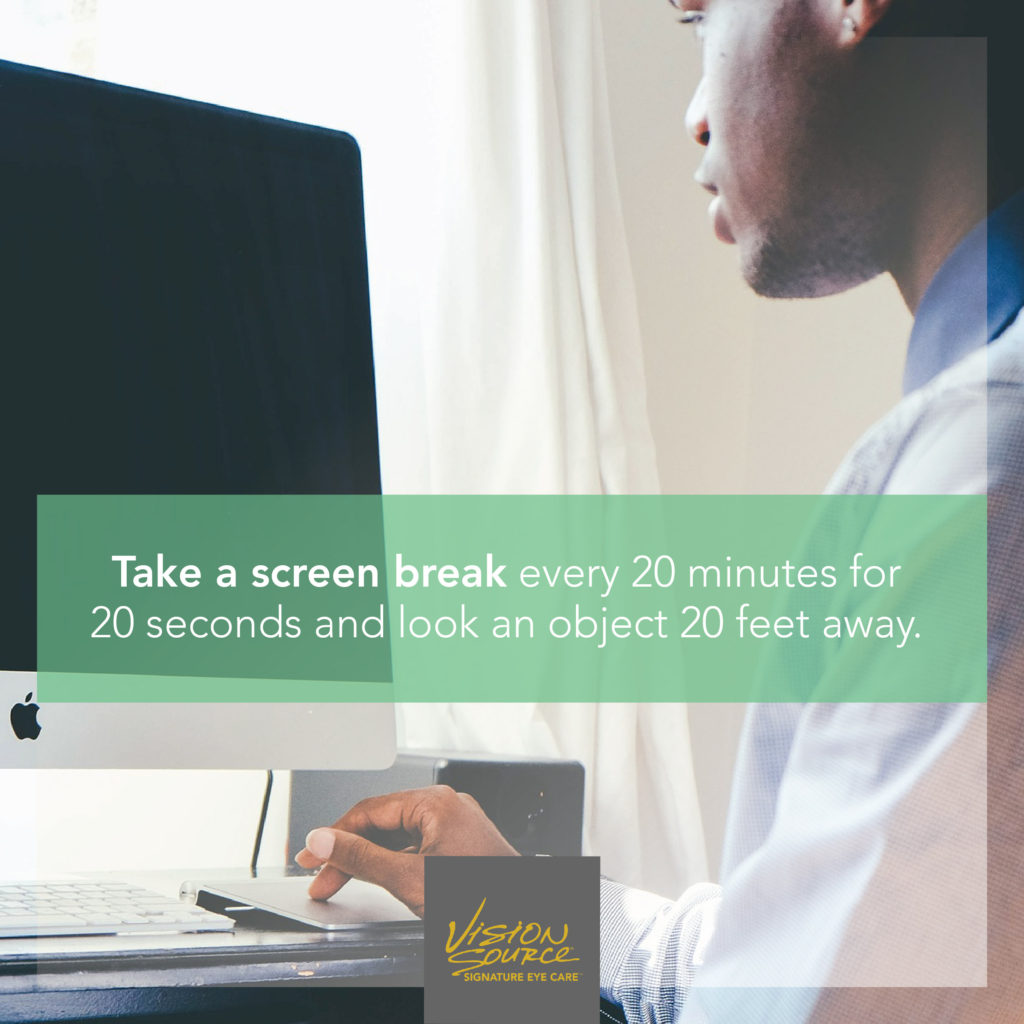Screen Breaks – The 20/20/20 Rule
Protecting our eyes in the workplace

For the purposes of this blog post, the workplace can be divided into 2 areas: Office Jobs & Higher risk jobs.
Higher risk jobs include construction, manufacturing work, mining, carpentry, auto repair, chemical lab, electrical work, plumbing, welding, and maintenance. More than two thousand workers in this line of work seek medical attention for an eye injury every day.
That may sound alarming, but the good news is that 90 percent of these injuries can be prevented or at least reduced in severity through the use of proper safety equipment. Safety glasses, goggles, face shields, welding helmets, or full-face respirators should be used as needed.
Following safety policies and using chemicals and solvents properly cuts down on the risk of chemical injuries. Polycarbonate lenses made of the proper thickness are a step in the right direction. A safety frame is often overlooked but is equally important. Safety frames designed to take a direct blow and absorb an impact (per ANSI standards) are critical. One manufacturer of quality safety frames is Wiley-X. If you have an office job, you may not face the same risks of eye injuries, but your work conditions can still be hazardous to your ocular health. Blue light and digital eye strain are very real hazards.
Our blink rate is reduced when staring at the computer screen. Dry eye might not cause permanent damage to your eyesight, but it can make your eyes tired and irritated . Eyestrain negatively impacts work with headaches, neck pain and back strain.
A few ways you can fight back against that eye strain include repositioning your screen to a more ergonomic location, using artificial tears, drinking plenty of water, upgrading your antireflective coating to block certain wavelengths of blue light and following the 20/20/20 rule.